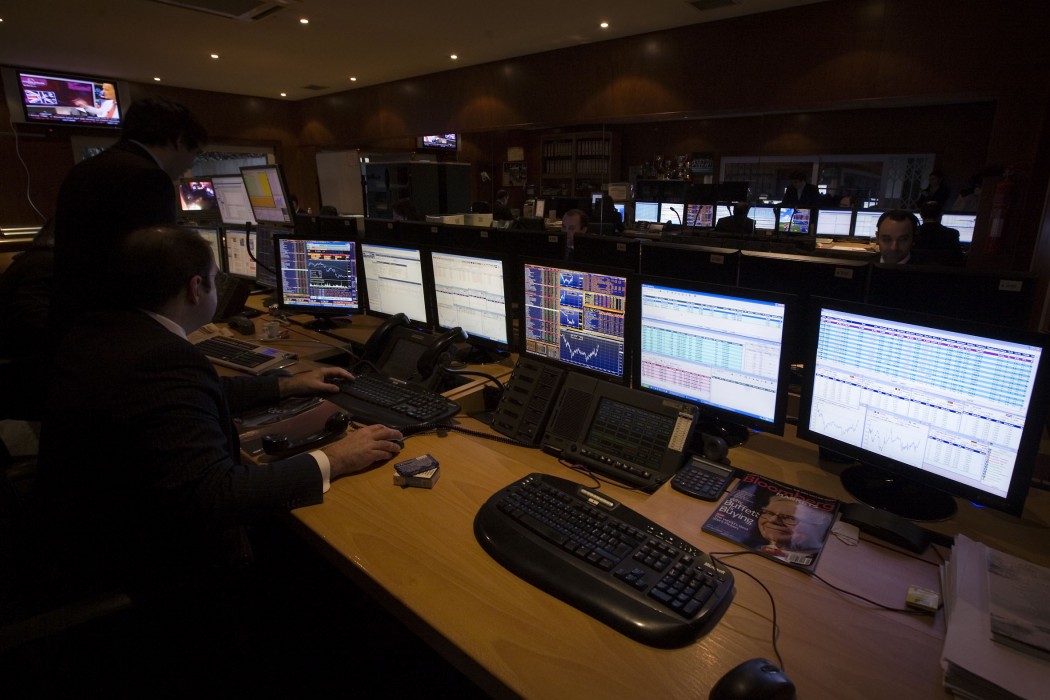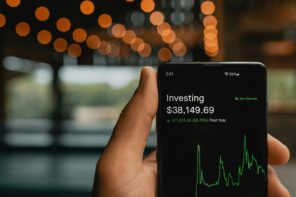Trading is not the profession it used to be. The vision we entertain of traders screaming bid-ask prices in a pit is dated at best, and more often than not, completely off. It still may be very exciting, and great risks still loom over the trader’s shoulders, but shouting the loudest is no longer the best skill a trader can have. Speed is.
What is High Frequency Trading?
High Frequency Trading (HFT) has until recently remained an attention-free topic outside the financial sector, with Michael Lewis’ Flash Boys: A Wall Street Revolt being one of the few major publications to bring the subject to the public’s attention. Today, this topic has become more widely discussed and debated among the few who looked for this Wall Street secret hiding in plain sight. The term HFT might sound cryptic at first, like most financial jargon, but the concept is rather simple.
HFT refers to an automated way of trading using complex algorithms, and powerful computers to transact a large number of orders at extremely high speeds. The strengths of the algorithms employed are based on their predictive accuracy, and as such, the more profitable trades an algorithm predicts the stronger it is considered to be. Indeed, such algorithms are able to analyze the markets and spot emerging trends in a fraction of a second, turning a mispricing into an arbitrage profit at lightning speed. Currently most of the firms using HFT are hedge funds, though bulge bracket banks have also entered the space.
How does HFT work?
Here, a concrete example will be more helpful:
Imagine that you have the following rule about buying stocks: whenever a stock goes up by more than 1% in 5 minutes, you buy 100 units of it, expecting the stock to continue soaring in value on this trend. This simple rule can become a basic algorithm set to make trades on your behalf every time these ideal conditions are met and instead of manually entering each order, you can sit back, and let your computer do the work. If the strategy does not work in your favour, you can just go back and tweak it until satisfaction ensues.
HFT firms have been very proficient at finding such conditions and creating automated trading strategies that anticipate market movements. That is why, in the span of milliseconds or even nanoseconds, their trading systems send hundreds of baskets of stocks out into the marketplace at bid-ask spreads (the difference between ask price and the bid price) that are advantageous to the traders. This allows traders to exercise greater control over the laws of supply and demand, and consequently to sell at higher prices and to buy at lower prices in the marketplace. Overall, by correctly foreseeing the trends in the marketplace, institutions that implement HFT can gain highly favourable returns on trades, resulting in significant profits.
Have the HFT strategies “rigged” the system (Lewis)?
Since the Securities and Exchange Commission (SEC) deregulated electronic trading in 1999, these HFT firms progressively asserted themselves in the marketplace. These firms now account for about 73% of the total daily market volume on U.S. exchanges. Although supporters of the HFT model will continue to claim that they merely enhance market liquidity, which in turns benefits all market players – pension funds, mutual funds and retail investors like you and me – there is also evidence supporting a strong correlation between market volatility and HFT activity in that market. This increased financial system risk poses a significant drawback to HFT trading.
Others have spoken out against HFT, such as Santa Barbara Independent columnist Brian Tanguay, describing it as the newest complexity seeding the market, not unlike mortgage-backed securities (MBS) and collateralized-debt obligations (CDO) in the 2000’s. “This complexity favors the few middlemen sitting between investors and the market who make money from their earnings on fees, commissions, and rebates from order flow and volume”, Tanguay warns. Former RBC trader and IEX founder, Brad Katsuyama, surmised,: “The fact that people who make the most money want the least possible clarity — that should be alarming, too.”
How do HFT strategies prey on investors?
The true controversy started when it was made clear that this opaque business, with record high returns, was as shady as it seemed. Using predatory trading techniques, HFT firms are able to move in and out of short-term positions at high volumes and high speeds, which sometimes aim to capture only a fraction of a cent in profit on every trade. The rapid trading of these stocks raise the prices almost artificially, making the trader a lot of money at the expense of the investor.
This predatory strategy called “front-running” was made possible thanks to well-intentioned but ineffective policy decisions. Indeed, after the SEC deregulated electronic trading in 1999, many new trading exchanges came to life, each coming up with their very own listed securities, prices and other bells and whistles. In order to counter the apparent complexity of the multitude of new exchanges, and with the good interests of retail investors in mind, the SEC implemented the Reg NMS in 2007, which legally compelled stockbrokers to fill their clients’ orders at the best available price regardless of which exchange it was found on. If a large order was being placed, some shares would be purchased first on the cheapest exchange out there before moving onto the next most expensive exchange and then so on the next and so forth. In the case of a large institutional investor like a pension fund, such as the Canada Pension Plan, a market order for 100,000 shares would likely be filled on eight or more exchanges, each trade occurring milliseconds after the last and making more in each subsequent exchange.
As usual, an example will make things clearer:
Imagine that the Canada Pension Plan (CPP) is interested in buying 100,000 shares of Apple at $101.50 a share. CPP will instruct its broker to make the purchase. The broker enters the trade into the computer, and a matching algorithm is used to purchase these shares at the lowest available market price.
Once 15,000 shares are purchased on the NYSE, the HFT firms identify that a large buyer exists in the marketplace, and is looking for the cheapest available Apple stocks. The HFT firms therefore rush ahead of CPP to buy all the existing shares still trading at $101.50 on the other trading venues. Once CPP finally arrives milliseconds later, at the exchange searching for 85,000 shares, the fund notices that no Apple share is left at $101.50. CPP will therefore be forced to buy the stock at the new market price of $101.52 at which point HFT firms sell their recently acquired shares pocketing the spread of two cents per share. In the blink of an eye, CPP overpaid by 0.02 cents per stock shares on an order of 85,000 shares, making for a total of $1,700 in only seconds for this single mundane transaction. Meanwhile, the HFT firms made that much in profit, with no remaining exposure on their trading books.
This front-running strategy is the bread and butter of HFT and is responsible for billions in profits for the smart money HFT hedge fund and the billions in loss for the real money personal brokerage accounts, and pension funds and mutual funds.
HFT firms can no longer be ignored, and investors need to know about them. You might still shy away from the markets for now, but we will all soon enough contribute to some sort of a fund, and HFT firms will surely be around then.Whether the firms are facilitators and market-makers, rather than mere parasites is a debate saved for another day. However, know what is lurking out there and make the best informed decision when the time has come for you to enter the financial arena.









very informative!
Agreed.
🙂